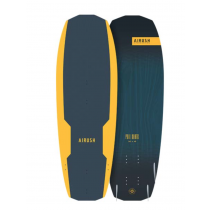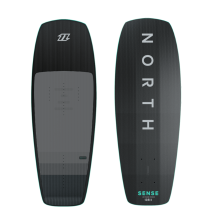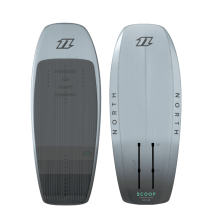- Free UK Delivery
- We Ship Worldwide
- Simple Exchanges
- Knowledgeable Staff
- Secure Online Ordering
- Returns within 30 days
Guide to Foiling
Intro
by Mike Birt
Foiling, or more accurately the new generation foils are one of those things that many consider a great shift in the sport. Like the perfection of the first de-power hybrid kites back in the mid naughties the foil has added a whole new world to our sport. While it can look pedestrian to the seasoned kitesurfing observer, foil boarding is anything but. Occasionally labelled as ‘lawn mowing’ to the untrained eye, those who have learned the discipline have found it quite the reverse. From early days to expert levels, the mastery of the foil is far more engaging and rewarding than you may realise. Swapping back to a normal board seems very one dimensional and pedestrian by comparison. Try and find a rider that has learned and then gave up (certainly with this new breed of equipment) - you’ll be looking a long time.
Once mastered, it’s a bit like snowboarding down a mountain covered in powder - smooth carving, effortless glide. That extra vertical dimension with its pitch control and sensation of flight is utterly addictive. Whats more, the efficiency levels mean you can easily triple the speed of the wind, so in 10kmh, you can wind your kit up to 30kmh with ease. Kites sizes are very small, thus fast and fun, and that means you start looking at the weather forecast with different eyes. Light wind sessions become the norm which brings kitesurfing more into the world of time dependant sports as opposed to condition dependant sports.
Lastly, whilst foil-boarding is heralded by most as a very tricky prospect (historically accurate), and perhaps a labor of love for only the most gifted riders, the last two years have seen a paradigm shift. Whilst old wings had large energy requirements to get going, such that their minimum cruising speed was punishingly high, many new bigger wings fly as slow as 6kmh and have dramatically cut the amount of power needed to get you up and running, letting you cruise at walking pace. These new wings bring much more stability that if you choose to, you can pour power into them to bring your speeds up to race level, but if you take your hand off the throttle, you will slow back to walking pace… So now it’s not a case of falling off at speed from a great height, but one of simply stepping off, from a much shorter one. The discipline has come a long way in a very short time.
Learning Curve
So, with good kit, just what are you in for?
Expect, with a little forethought, to be holding a run within a few minutes, maybe 2-3 falls before you can rise, and put the board back down again. It’s really this easy. Agreed a few years ago it was punishingly difficult and we would even go as far as to say risky, with session after session of frustration, but now, it is a completely different prospect.
At first you will just ride around off the foil, then hop up, then put down. After this it’s time to concentrate on extending your runs, learning pitch control (the control of the height at which you hover over the water). Expect this to be your first hour. After that you can explore coming back downwind - yes, it’s the opposite to learning to kiteboard - ironically upwind is much easier than downwind.
It will not be long until you will explore gybing, which on the new low speed foils is extremely easy, then switching feet (trickier) and then your next goalpost is the foiling tack. That is your first big ‘expert’ badge.
How soon you get through this list differs depending on ability and time, but expect to be confident in getting around after 3-4 sessions.
Conditions
Whilst we see experts on massive foil kites ride in 4kmh, when there is not even enough wind to ripple the water, the true ability of your low end depends on your kites ability to fly and produce the power you need. Learning is best done with a 10-12m depending on body weight and with some power, say 10-15kts, kite high and de-powered. Once confident most tube kites can be used from 6kts upwards, and riding in these winds is fast and addictive. The top end of foil use is down to preference, but most reach for their normal kit when the wind hits around 20 knots, the dedicated keep going into the low 30’s.
Kite Suitability
It’s true that some kites are better for foiling than others, though all are compatible. Light weight makes for beneficial light wind stability and agility. High de-power levels allows you to dump power after you start, which you will be doing a lot of, for once up the power requirement is but a tiny fraction of a normal board. Ability to turn the kite when de-powered is also highly desirable, (pulley bridles help with this) as is the ability of the kite to water restart. Wave kites are ideal, beginners kites even, but many riders just use what they have even when inappropriate, and in many cases to great effect - I know of many freestyle riders who use C kites against all the odds to good effect.
Different Disciplines
Though the first hydrofoils came to kitesurfing from the ‘air-chair’ of the waterski world, the mass market started to experiment with the technology and it has now spread from kite to the world of Surfing and Windsurfing.
Whilst the principle of the discipline remains the same, the speed and lift requirements of the three disciplines are different and while elements are compatible, wings and positioning are different and thus its sadly nigh on impossible to use one for another.
Kitesurfing can use a large range of wings and have the widest speed range. Setups can be modified to accept surfing wings quite easily, though the mast/board mounting angles are slightly different. Surfing wings lift and live life at very slow speeds and need to be able to pump to sustain flight when wave power is low, but do share a lot of compatibility with Kite foil setups.
Windsurfing foils have very different geometries as windsurfers have a different balance point and mounting locations, so these are quite different in geometry and wing shape - unique in fact.
Terminology
The foil breaks down into the following components which all bolt together to for a whole system; Foilboard - that’s in need of no explanation..
Mast Plate - mounts the mast to the foil board on an alloy foil.
Mast - alloy or carbon, differing in lengths.
Fuselage - connects wings to the base of the mast.
Front wing - is the source of lift.
Rear wing or stabiliser - is the counterbalance to the front wing and actually creates opposing lift to the front wing.
Carbon, Aluminium and the dreaded Plastic
It’s no secret in foil-boarding that stiff is good, and stiffer is better. Having components that bend is like trying to knit a jumper with a rubber knitting needle. No matter how good you are, oscillations amplify, until you are ejected. Unlike a bird or plane that changes the shape of its wings, the foil is constantly trimmed by your stance, which becomes autonomic eventually, but any flex in this system plays havoc with the input / feedback loop of the person trying to control it.
The mechanics are such that every component is under far more load than you think; It’s not just your weight alone. It’s your mass, plus power channeled from the kite driving through your legs, times the leverage you have in front of the mast. It’s really a lot. The quads of a foil racer are akin to a downhill skier, and you can be sure they are put to good use.
Carbon offers, weight for weight, more stiffness. It’s got very little to do with any weight saving, but all to do with the stiffness. That is not all the story however - some components benefit greatly from stiffening, others less so. Mast - you would be surprised how stiff some alloy masts are, some (like the shinn mast) are hugely stiff, others vary but many experts have been found racing on alloy masts. As a rule most carbon masts are stuffer than alloy, but it is possible to find a carbon mast that is more flexible than an alloy mast, so think carefully before you invest in carbon. Pretty, yes, practical, well that depends!
Fuselage - whist a carbon foil usually comes with a carbon fuselage, a good size solid alloy fuselage is never inferior, except perhaps in weight, and that is no performance issue when up and running.
Wings - Unlike birds or aeroplanes, kite wings cannot change shape, and as such rely 100% on adjustment of rider position for trim. Any flex, certainly in the main lift wing is bad news. Small thin wings are better in carbon, big thick wings (like modern wings we currently use in freeride) are easily stiff enough in composite.
So is alloy the poor relative?
No. not at all. Alloy can indeed be very stiff, fuselages certainly are as stiff as they come, and remember, if you are not exposing the foil to huge loadings (as a high speed racer would contending with far longer and inherently more flexible mast lengths because of this) you will never use this extra stiffness. So whilst highly engineered carbon systems can boast better handling, it’s only the elite that can access it, and indeed some production carbon foils can be (certainly at slow speeds) more unwieldy, and certainly more fragile, than the alloy variants.
There is one no-no. Plastic. In the last few years we have seen injection moulding attempting to make wing components to lower the production price on foils, and they are without exception terrible. Not only is the moulding process unreliable in strength and accuracy, but the wings are flexible and torsional strength around mounting points is also terrible. Stay well clear, even if the companies are calling them ‘reinforced with carbon’. Pencils have carbon in, but they don’t make good tyre levers…
Snowboard or Volume boards?
Opinions on this are split. For sure Snowboard decks like the Shinn Jackson are much more practical; they take up little room, instructors say they are far easier to learn on as they stay on their side for water-starts far longer. They are also indestructible and better value.
Volume boards tend to be stiffer which is better for high loadings (most free-riders never achieve these loadings) and should you experience a paddle home, a bit of volume makes this easier.. There is no right answer…
Can I lean on a smaller, older, maybe used race style wing setup?
It’s possible. Many did. I’m pretty handy when it comes to kitesurfing having done the sport for 18 years prior to trying to learn on one of these things. After 2 years I managed to significantly reduce the number of times I ended up bruised and welted post session, swims home and genuine runaway train moments abated somewhat. But I can honestly say that my standard sky-rocketed the day I used a modern freeride wing for the first time.
So I guess the real answer is no. The new kit you see with wings between 850 and 1200cm2 mark a change in the sport, and honestly i would not recommend trying on anything else. The sport came to us from the race circuit in France which was highly advanced before we even saw it. The experts had no interest in making it easy for beginners - you serve your time and join the club was their attitude. It was not until the industry re-engineered everything with the modern freeride wings that it became a sport for any kiteboarder. It was previously only the domain of the gifted expert.
What about mast lengths?
It’s true that shorter masts represent a shorter stepladder should you fall off. Moreover, it’s much easier to wobble out of a crash should you breach your wings out of the water (happens when you fly too high and your wings cavitate, loosing all lift) as your board tends to bounce instead of digging in. The trouble is that short masts allow, by their shorter nature, you to breach your lift wing far more easily. If it’s choppy, or you cant the foil hard on its side to carve or power upwind, there is simply not enough length to keep the wings buried.
So - learn on a short mast (60cm) if you want the most civilised learning curve, and upgrade to 75 or 90 when you have a handle on the situation which may be as soon as 3-4 sessions in. As a point of note, 40cm masts are a waste of time - as soon as you foil you will breach and these are only any good for the first 10 mins in a school environment.
Long masts of a meter or more are best in carbon to reduce flex, and as you can imagine offer the best face plants when you are trying to go super fast.
Once you are through the learning curve, 60 is only used in shallow water environments. 75cm for surfing and manoeuvre oriented riders, 90-95 for general freeriding.
Foil and Foilboard Compatibility
There are no rules as to what board you need to use on what foil. The only restriction are the physical mounting points. Most European companies use a 4 bolt system - 16.5 cm long, by 9cm wide. This is the industry standard. Most US companies, and the odd renegade euro company use something else varying between some random plate measurement or a bespoke box system. I would stick to buying something that has a 16.5 x 9 standard. it’s good for re-sale and upgrades..
Care for your foil..
All foils use bolts, and the sea is one of the most corrosive environments around, so when you are storing your foil, we always recommend breaking it down and storing it dry. Separate any alloy components from stainless screws, always try and use a lubricating gel like tef gel or lithium grease. You will be rewarded for doing so, regardless of brand or environment. Electrolysis is always a concern when storing foils.
Now we will take you through a guide to the Foil system we use - Airush and Shinn.
Shinn Intro
Shinn were the originator of the modern oversized wing, and the first brand to bring foiling from the realm of ‘expert only’ to anyone can learn. This magic wing is called the P wing and it’s a legend in the industry. Extremely stable flight from 6/8 km/h with minimal power and a top speed of around 38km/h which makes it one of the widest speed ranges on the market. It is by far the easiest wing to use. Kite schools swear by it. Intuitive and easy, it’s still widely used by experienced riders who value learning new tricks over flat out speed, for if you need to learn anything, this is the wing to do it on.
Since this wing there have been many others from Shinn, from surf to speed, to fast freeride, and all are interchangeable with each other (different stabilisers are recommended for different front wings, but this is a tuning issue, not a functionality issue). Shinn’s mast is unique to the brand - it’s very, very stiff and available in a variety of lengths. There is a new stiffer and updated fuselage for 2019, as well as a new mounting plate that is stiffer still.
Shinn’s board range is also one of the most popular around - The Jackson is a snowboard construction, smooth, easy, practical, very stiff for this style of board and exceptional value. It’s low buoyancy means that its very easy to place for water starts and the thin nature brings you closer to the foil without loosing mast length, so you get a handling advantage per cm of mast length. Plenty of nose rocker makes it great for surviving touchdowns too.
It’s worth checking with www.shinnworld.com for updates as depending on when you read this there are always cross compatible updates coming out. I know that they are producing a yet to be released carbon mast for 2019, though it has not been released yet.
Front Wings
F wing - 550 cm2 freerace wing, composite construction capable of 14-50+ km/h
K wing - 750cm2 - freeride wing with lively but solid handling capable of 10-50km/h
P wing - 1000 cm2 - High Lift freeride, with exceptionally easy riding characteristics.
Mega K - 1200 cm2 - surf wing for super slow flight, pumping and extreme manoeuvrability.
Rear Wings
ST1 - 200 cm2 for F foil use
ST2 - 240 cm2 for K wing use
ST3 - 280 cm2 for mega K and P wing use
Boards
Jackson 120 - Super short for manoeuvrability but limited light wind starting and strike resistance
Jackson 130 - Medium length board that is do-able for the vast majority offering reduced swing weight
Jackson 145 - Highest surface area board for the easiest starting, highest strike resistance and the earliest flight initiation.
Shinn have a big reputation for quality, backup and most importantly innovation in the industry. Innovation that empowers all riding levels, not just the pro level rider, and this is never more so than their foil program, which is responsible for the revolution of foil product enabling riders of any standard to embrace and excel in this field. Much copied, the rest of the industry owes Mr Shinn a beer for the invention of that P wing!




